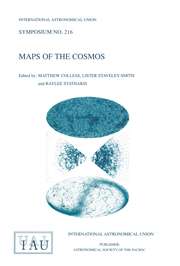No CrossRef data available.
Article contents
Triggering the Formation of Young Clusters
Published online by Cambridge University Press: 03 August 2017
Abstract
Star formation is triggered in essentially three ways: (1) the pressures from existing stars collect and squeeze nearby dense gas into gravitationally unstable configurations, (2) random compression from supersonic turbulence makes new clouds and clumps, some of which are gravitationally unstable, and (3) gravitational instabilities in large parts of a galaxy disk make giant new clouds and spiral arms that fragment by the other two processes into a hierarchy of smaller star-forming pieces. Examples of each process are given. Most dense clusters in the solar neighborhood were triggered by external stellar pressures. Most clusters and young stars on larger scales are organized into hierarchical patterns with an age-size correlation, suggestive of turbulence. Beads-on-a-string of star formation in spiral arms and resonance rings indicate gravitational instabilities. The turbulence model explains the mass spectrum of clusters, the correlation between the fraction of star formation in the form of clusters and the star formation rate, found by Larsen & Richtler, and the correlation between the size of the largest cluster and the number of clusters in a galaxy.
Information
- Type
- Part 3. Super Star Clusters and Associations
- Information
- Symposium - International Astronomical Union , Volume 207: Extragalactic Star Clusters , 2002 , pp. 390 - 400
- Copyright
- Copyright © Astronomical Society of the Pacific 2002

